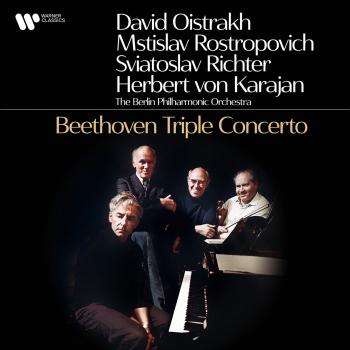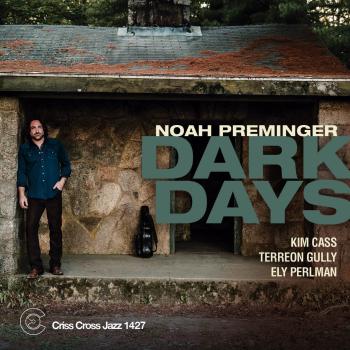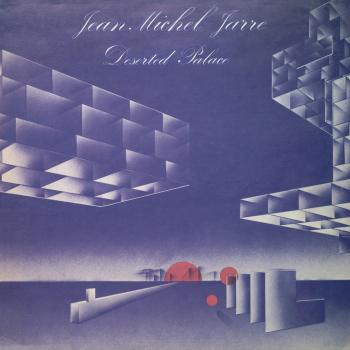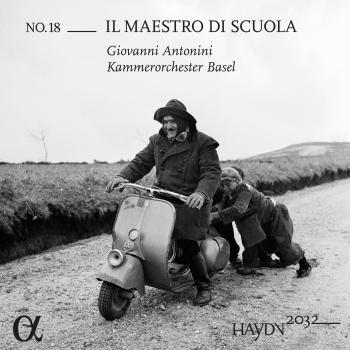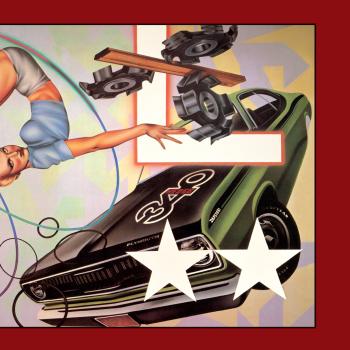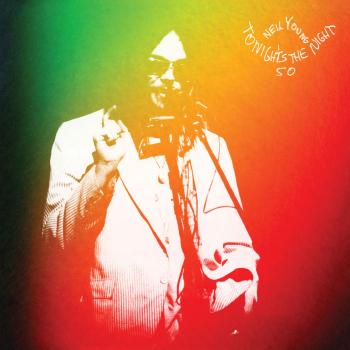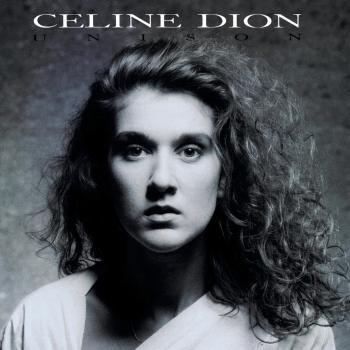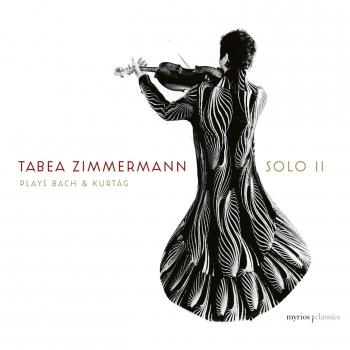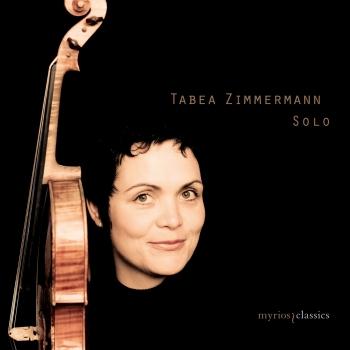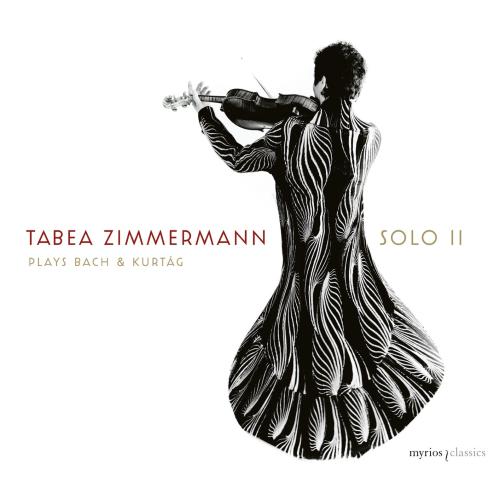
J.S. Bach & Kurtág: Works for Viola Tabea Zimmermann
Album info
Album-Release:
2020
HRA-Release:
23.09.2022
Label: Myrios Classics
Genre: Classical
Subgenre: Chamber Music
Artist: Tabea Zimmermann
Composer: Johann Sebastian Bach (1685–1750), György Kurtág (1926)
Album including Album cover Booklet (PDF)
I`m sorry!
Dear HIGHRESAUDIO Visitor,
due to territorial constraints and also different releases dates in each country you currently can`t purchase this album. We are updating our release dates twice a week. So, please feel free to check from time-to-time, if the album is available for your country.
We suggest, that you bookmark the album and use our Short List function.
Thank you for your understanding and patience.
Yours sincerely, HIGHRESAUDIO
- Johann Sebastian Bach (1685 - 1750): Cello Suite No. 3 in C Major, BWV1009 (Transcr. for Viola):
- 1 Bach: Cello Suite No. 3 in C Major, BWV1009 (Transcr. for Viola): I. Prélude 03:03
- 2 Bach: Cello Suite No. 3 in C Major, BWV1009 (Transcr. for Viola): II. Allemande 03:14
- 3 Bach: Cello Suite No. 3 in C Major, BWV1009 (Transcr. for Viola): III. Courante 02:43
- 4 Bach: Cello Suite No. 3 in C Major, BWV1009 (Transcr. for Viola): IV. Sarabande 03:30
- 5 Bach: Cello Suite No. 3 in C Major, BWV1009 (Transcr. for Viola): V. Bourrées I & II 03:23
- 6 Bach: Cello Suite No. 3 in C Major, BWV1009 (Transcr. for Viola): VI. Gigue 02:52
- György Kurtag (b. 1926): Games, Signs & Messages (Excerpts for viola):
- 7 Kurtag: Games, Signs & Messages (Excerpts for viola): No. 6, Klagendes Lied 02:23
- 8 Kurtag: Games, Signs & Messages (Excerpts for viola): No. 7, Zank-Kromatisch 01:17
- 9 Kurtag: Games, Signs & Messages (Excerpts for viola): No. 15, Doloroso - Garzulyéknak 01:44
- 10 Kurtag: Games, Signs & Messages (Excerpts for viola): No. 9, Im Volkston 00:44
- 11 Kurtag: Games, Signs & Messages (Excerpts for viola): No. 22, eine Blume für Tabea 01:01
- 12 Kurtag: Games, Signs & Messages (Excerpts for viola): No. 20, In Nomine - all'ongherese 05:08
- Johann Sebastian Bach: Cello Suite No. 4 in E-Flat Major, BWV1010 (Transcr. for Viola):
- 13 Bach: Cello Suite No. 4 in E-Flat Major, BWV1010 (Transcr. for Viola): I. Prélude 03:53
- 14 Bach: Cello Suite No. 4 in E-Flat Major, BWV1010 (Transcr. for Viola): II. Allemande 04:01
- 15 Bach: Cello Suite No. 4 in E-Flat Major, BWV1010 (Transcr. for Viola): III. Courante 03:13
- 16 Bach: Cello Suite No. 4 in E-Flat Major, BWV1010 (Transcr. for Viola): IV. Sarabande 03:37
- 17 Bach: Cello Suite No. 4 in E-Flat Major, BWV1010 (Transcr. for Viola): V. Bourrées I & II 04:28
- 18 Bach: Cello Suite No. 4 in E-Flat Major, BWV1010 (Transcr. for Viola): VI. Gigue 02:21
Info for J.S. Bach & Kurtág: Works for Viola
Ten years after her acclaimed album Solo with the first two cello suites of Johann Sebastian Bach, violist Tabea Zimmermann now sets her sights on Suites Nos. 3 and 4. She pairs them with excerpts from György Kurtág's cycle Games, Signs & Messages, selecting six numbers to form her own personal homage to Bach.
For what kind of instruments did Bach write his solo suites BWV 1007-1012? How did they sound, what did they look like? This subject still gives rise to much speculation. Johann Peter Kellner's manuscript copy from the early 1700s is one of the two main sources for the six solo suites, and it indicates a viola basso. The violoncello had not yet become standardized in terms of size, construction, and playing technique; Bach probably had instruments in mind such as the violoncello piccolo or the viola da spalla.The latter was a viola attached in front of the body by a strap: Bach performed the viola da spalla in public himself possibly these suites. Tabea Zimmermann has not switched her musical hardware for this recording: here she plays her 1980 Vatelot viola with a classical bow.
In 2009, the album Solo (MYR003) launched Tabea Zimmermann's collaboration with the myrios classics label. The release was crowned with a multitude of international awards: Gramophone Editor's Choice, Stern des Monats in Fono Forum, 4f in Télérama and 5 Stars in the Italian magazine Musica; moreover, in response to that groundbreaking recording, the jury of the coveted German ECHO Klassik Prize selected Tabea Zimmermann as 2010 Instrumentalist of the Year.
"Zimmermann’s playing is profoundly thoughtful, leading to flawlessly structured readings...Perhaps most remarkable is Zimmermann’s breathtakingly skilful performance of the Sarabandes in which the differentiation of detail within a contrapuntal texture sounds almost as if two instruments are playing...Superbly recorded in a richly resonant ambience, this is an unusual and compelling release." (BBC Music Magazine)
"[The Kurtág pieces] are powerfully direct in expression while displaying the greatest compositional skill and subtlety...As for her Bach, it is a joy. I sometimes wonder if these suites work better on the viola than they do on the cello, so much do they gain in lightness and agility. Certainly in Zimmermann’s hands they are airborne, free to race and play, dance with nimble feet or graceful swings, and sing with clean, sweetly floated line." (Gramophone Magazine)
Tabea Zimmermann, viola
Tabea Zimmermann
who considers herself “a musician who plays the viola”, is one of the most popular and renowned artists of our time. Audiences and fellow musicians value her charismatic personality and deep musical understanding.
As a soloist she regularly performs with the most distinguished orchestras worldwide, guided by the ideals of her experience as a chamber musician, where artistic integrity is paramount. She was recently named Artist-in-Residence of the Royal Concertgebouw Orchestra Amsterdam and of the Berliner Philharmoniker.
Tabea Zimmermann has inspired numerous composers to write for the viola and has introduced many new works into the standard concert and chamber music repertoire. Since 2009, she has been recording for the myrios classics label. The seven albums previously released have been highly acclaimed by both listeners and the music press, and have been honored – without any exception – with the most important international record awards, including two ECHO Klassik, one OPUS Klassik, two Diapason d’Or de l’année and the ICMA (International Classical Music Award).
For her tireless enthusiasm to communicate her love of music to her audience and her uncompromisingly high quality standard, Tabea Zimmermann has been awarded the German Federal Cross of Merit in 2018, and was named winner of the international Ernst von Siemens Music Prize in 2020.
Tabea Zimmermann received her first viola lessons at the age of three, two years later she began to play the piano. In the beginning, she received significant inspiration from her first teacher Dietmar Mantel. She studied with Ulrich Koch at the Freiburg Conservatory of Music and subsequently with Sándor Vegh at the Mozarteum Salzburg. Following her studies, she received several awards at international competitions, amongst them first prizes at the 1982 Geneva International Competition, the 1983 Maurice Vieux Competition in Paris and the 1984 Budapest International Competition. From 1987 until his early death in 2000, Tabea Zimmermann regularly performed with her husband, the conductor David Shallon. She has already held professorships at the Saarbrücken Conservatory of Music and at the Frankfurt Conservatory of Music. Since 2002 Tabea Zimmermann has been professor at the Conservatory of Music "Hanns Eisler" in Berlin.
Booklet for J.S. Bach & Kurtág: Works for Viola


